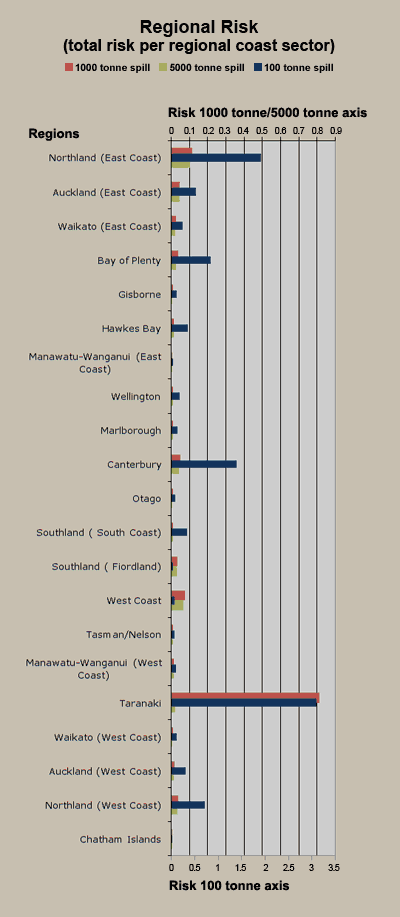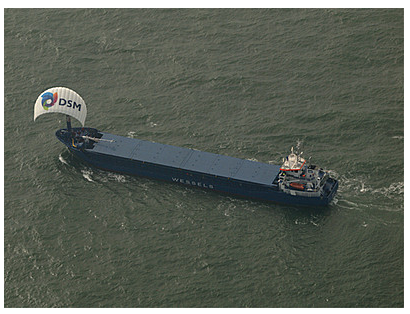Environmental effects
The high level of vessel activity in New Zealand can negatively impact the marine environment in the following ways:
Biosecurity risks
Over 350 introduced marine species have been recorded in New Zealand waters. 34997f39-1dd3-4eb4-baab-3ce7ce52d192 The majority of these are thought to have arrived via hull fouling with the remainder through the discharge of ballast water. Hull fouling is the process where organisms accumulate on a surface in the sea. In the initial stages, organic material sticks to the hull and is rapidly colonised by bacteria and microalgae forming a ‘slime layer’. This layer is then colonised by larger organisms such as macroalgae, barnacles, bryozoans and tubeworms, creating more complex fouling. Over time, as the complexity of fouling increases, habitat is created for other organisms such as isopods and crabs. As a result, invasive species can be transported around the world by vessels with fouled hulls. Many of these species are relatively benign, but some have caused major impacts. For example, the sea squirt Didemnum vexillum arrived in Picton on a vessel hull and has become a major marine pest in the Marlborough Sounds.
Ballast water is used to provide ship stability. Water from one port can be pumped into a ship before its voyage begins and can be discharged when the ship arrives at its destination port – therefore the expelled seawater can contain species from the originating port. For example, there has been severe damage to commercial fisheries in the Black and Asov Seas as a result of the introduction of an American jelly fish from ballast water.
3bc9e8da-27fb-41b0-bd65-ab1676d04d53
These issues are discussed in the section on marine biosecurity.
Pollution
Oil and chemical spills
Every year there are spills of diesel, petrol, oil and other toxic chemicals into the sea. For example, in 2006, over 80 spills were reported. Major oil spills can occur when vessels collide or run aground and hole their tanks, although the risk is reduced if vessels have double hulls. Spillages can also occur when oil cargoes are transferred. Recreational vessels can also release oil into the marine environment when oily water is pumped from bilges and when fuel tanks overflow during refuelling.
There have been several significant spills in New Zealand waters over the last two decades:
1eb695b9-f7e0-4af3-96b5-d5df826fbf17
- 1998: Don Wong 529 in Stewart Island (400 tonnes of automotive gas oil)
- 1999: Rotoma in the Poor Knights Island (~7 tonnes of oily bilge discharge)
- 2000: Sea Fresh in the Chatham Islands (60 tonnes of diesel)
- 2002: Jody F Millennium in Gisborne (25 tonnes of fuel oil)
- 2011: Rena in Tauranga (~350 tonnes of heavy fuel oil)
The last big oil spill in New Zealand occurred in 2011, when the M.V. Rena struck Astrolabe Reef 12 nautical miles off Tauranga, and grounded. The vessel was carrying 1,368 shipping containers and 1,733 tonnes of heavy fuel oil at the time of the grounding. Around 350 tonnes of oil and 500 containers entered the marine environment. As a result of the disaster, a total of 2,410 dead birds were collected, of which 1,448 were oiled. 2cf78b01-07f6-48ae-b116-3d1e92615c49
Oil discharged into the marine area can have serious impacts on wildlife and habitats, depending on where the oil ends up. For example, oil spills in the open sea may cause little ecological damage as the oil is broken down naturally by micro-organisms (such as bacteria and fungi) into non-hazardous substances. Sunlight, wind and wave action also helps to break oil down. Conversely, major ecological impacts can occur if an oil spill moves onto the shoreline. For example, an oil spill in a sheltered environment such as an estuary means the oil can become trapped and seriously impact mangroves, worms, molluscs, juvenile fish and crustaceans, as well as contaminating shellfish beds.
Birds are particularly susceptible as oil damages the waterproofing on their feathers and, as a result, they can get cold and are prevented from swimming, floating or flying. The toxic components of oil can also cause serious or fatal illnesses and can contaminate the habitat and feeding grounds of coastal seabirds.
A regional risk profile has been prepared by Maritime New Zealand which highlights the levels of risk associated with oil spills from three different sizes of vessels. The 2010 risk profile is shown in the figure below. The risk profile includes an assessment of the likelihood of a spill happening and the effects of the spill. Mapping of environmental sensitivity is combined with the risk assessment to calculate the probability of the potential impact of oil on the coastline.
1bcaf5d0-8961-4368-b7d2-ed8af46056da

Sewage discharge
The Resource Management (Marine Pollution) Regulations 1998 states untreated sewage must not be discharged within 200 metres of a marine reserve, within 500 metres of land, a marine farm or a mātaitai reserve, or in water less than five metres deep. Outside of these limits, some vessels (such as fishing vessels) can discharge raw sewage into the sea from on-board toilets. This is only likely to constitute an issue in sheltered areas close to the shore where there is poor flushing, where there are recreational users of the marine area, or within the vicinity of marine farms or marine protected areas. It is, however, of significant concern to tangata whenua for spiritual and cultural reasons. While the environmental impact from the discharge of sewage from one boat is likely to be minor, the cumulative effects of the whole maritime sector are significant.
d3c0dbfa-eed7-457f-b97a-cd6bb8a0a6c8
Antifouling
Antifouling coatings are commonly used to protect submerged surfaces and prevent or slow down the growth of fouling organisms. Historically, tributlytin (TBT) was the main component of antifouling paints but the use of this was finally banned in 2008 due to the severe impact on marine organisms (such as causing sterility in some gastropods).
Today, antifouling coatings can be grouped into two main categories based on whether they rely on the release of toxic (biocidal) compounds to prevent biofouling. Toxic coatings release chemicals such as copper, iron and zinc that aim to prevent settlement or survival of marine organisms. Toxic-free coatings instead rely on their physical nature, such as having smooth surfaces, so organisms cannot attach. All toxic coatings must be registered and permitted for use as an ‘antifoulant’ by the Environmental Protection Authority before they can be applied.
The chemicals in antifouling paints may contain harmful substances that pose a contamination risk if leeched into the surrounding seawater. In fact, recent modelling by NIWA suggests that in many New Zealand marinas, copper concentrations are likely above the guidelines for protection of marine aquatic life.
4afd9625-22eb-43e6-bbc7-c509705bc5ee
Dumping rubbish
Concerns regarding the impact of rubbish dumped in the marine environment have been increasing. A major threat to marine wildlife is plastic debris, mainly due to this being eaten or causing entanglement. It has been estimated that over a million birds and 100,000 marine animals, including mammals and turtles, die each year from plastic debris worldwide. A vast majority of plastic waster in the New Zealand marine environment comes from land; however there is an impact of rubbish from vessels entering the water. This issue is discussed further in Chapter 16: Marine tourism and recreation.
Harm to marine animals and birds
Ships moving through the water can hit marine mammals and fish and injure or kill them. Ship strike happens because dolphins and especially whales are moving much slower than vessels and spend considerable time on the surface, which can put them directly in the path of boats. The greatest number of marine mammal deaths from ship strike is caused by large ships travelling at more than 12 knots.
Ship strike is a particular problem in the Hauraki Gulf because it houses the busiest port in the country and it is also important habitat for dolphins and the nationally critically threatened Bryde’s whale. Between 1997 and 2007, 25 Bryde’s whale deaths were recorded in the Gulf, of which 14 were found to have died from injuries consistent with collision with a large vessel. fcb05140-1378-40bc-bb98-a33f1bebf539 On average about two Bryde's whales a year are found dead from vessel-strike. The Hauraki Gulf Transit Protocol for Commercial Shipping is a voluntary measure agreed between the Ports of Auckland and the shipping industry. Vessels are asked to slow down to 10 knots while transiting the Gulf. If widely adopted, this should reduce the number of whale deaths caused by vessels. This is discussed further in the case study below.
Vessels, including container ships, generate underwater noise, which can impact on the hearing system of marine mammals, both in enclosed waters and the open ocean. Human-produced noise has been shown to displace killer whales.
96c177ed-ccd2-4555-b751-880ebc783032
Research has shown that the way marine mammals behave in response to noise varies considerably between the different species, as well as between individuals, sex and age classes. The context of the noise is also important.
024d967b-9086-41e3-90a4-25cd00f6d132
Shoreline erosion
Vessels moving at fast speeds through coastal passages can create a large wake, which in turn can impact on the marine environment. This issue of shoreline erosion is particularly associated with fast ferries which can travel up to 40 knots, much faster than conventional vessels. This faster speed produces a longer-period wake that disturbs the seabed at greater depths than conventional shipping. This can result in changes to the marine habitat and the composition of the communities that live there. It can also alter the shape of the shoreline and result in accelerated coastal erosion. In confined areas such as the Marlborough Sounds, vessel wake has been associated with a reduction in marine species in the inter-tidal and shallow sub-tidal areas. Tangata whenua are concerned that the ferries could impact on kaimoana resources. 9d597e7c-498f-477b-9908-e8fe328f038c
Greenhouse gas emissions
Direct contributions to climate change through shipping activities and through the production of vessels and machinery is an increasing concern. The global shipping industry is believed to be responsible for around 1 billion tonnes of greenhouse gas emissions per year, which equates to approximately three per cent of the world’s total emissions. db48f9fc-3201-4ea9-8cb5-c78363c9f10c
There is now a major global effort being placed on reducing the impact of shipping on greenhouse gas levels which will have an impact on New Zealand’s shipping industry and marine environment. For example, the European Commission is proposing that from 2018 large ships using European Union posts need to report their verified emissions. Some of the major shipping lines entering New Zealand waters are investigating alternative power sources for their vessels. For example, using alternative fuels such as liquefied natural gas which can potentially reduce CO2 emissions by 20 per cent 9286be7c-f24c-436a-af1b-a20508948465 or powering container ships by kite which is being suggested could reduce fuel consumption by as much as 20 per cent 5301bc86-41e1-487f-98bc-3bc07076e1c3 .

-
http://www.stats.govt.nz/browse_for_stats/environment/environmental-reporting-series/environmental-indicators/Home/Marine/marine-pests.aspx
-
Harbison G R and S P Volovik, 1994, 'The ctenophore, Mnemiopsis leidyi, in the Black Sea: A holoplanktonic organism transported in the ballast water of ships,' in Proceedings of the National Oceanic and Atmospheric Administration Conference and workshop on non-indigenous Estuarine and marine organisms, United States Government Printing Office, Washington, DC, 25-36.
-
http://www.maritimenz.govt.nz/Environmental/Responding-to-spills-and-pollution/Past-spill-responses/Past-spill-responses.asp
-
http://www.maritimenz.govt.nz/Environmental/Responding-to-spills-and-pollution/Past-spill-responses/Rena-response.asp
-
http://www.maritimenz.govt.nz/Environmental/Marine-oil-spill-risk-assessment/
-
http://www.maritimenz.govt.nz/Environmental/Sewage-discharge/Sewage-discharge.asp
-
http://www.niwa.co.nz/news/are-antifouling-paints-harming-our-sealife
-
Ingram K, 2007, 38; Haruaki Gulf Forum, 2008, 59
-
http://www.orcaresearch.org/wp-content/uploads/2011/08/Visser-2007-Killer-whales-in-NZ-waters-SC-59-SM19.pdf
-
http://www.epa.govt.nz/Publications/Liz%20Slooten%20-%20noise%20conditions%20statement.pdf
-
Van Roon M and S Knight, 2004, Ecological context of development: New Zealand perspectives, Oxford University Press, Victoria.
-
http://ec.europa.eu/clima/policies/transport/shipping/index_en.htm
-
http://www.hamburgsud-line.com/hsdg/en/hsdg/qualityenvironment_1/shipofthefuture_1/engine_1/engine.html
-
http://news.bbc.co.uk/2/hi/europe/7201887.stm
Last updated at 4:11PM on February 9, 2018